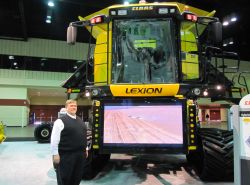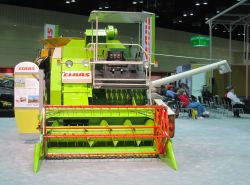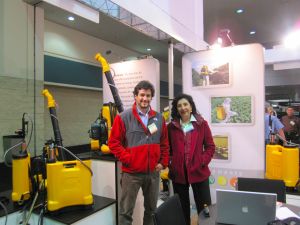 Alltech has once again sponsored the IFAJ-Alltech Young Leaders in Agricultural Journalism awards. Ten young agricultural journalist winners have been announced. Their awards will allow them to attend this year’s IFAJ Congress, which Cindy will be attending.
Alltech has once again sponsored the IFAJ-Alltech Young Leaders in Agricultural Journalism awards. Ten young agricultural journalist winners have been announced. Their awards will allow them to attend this year’s IFAJ Congress, which Cindy will be attending.
The IFAJ-Alltech Young Leaders in Agricultural Journalism awards recognize the leadership potential of young members from countries belonging to IFAJ. Recipients each receive 1,000 Euros to support their participation at an IFAJ Congress. Winners of the 2010 IFAJ-Alltech Young Leaders in Agricultural Journalism awards are:
Andrea Bahrenberg, Germany
Liza Burger, South Africa
Jesus Colmenarejo, Spain
Margaret Donnelly, Ireland
Tatjana Kren Hlebic, Slovenia
Aleksandar Radovic, Serbia
Soledad Ricca, Argentina
Lilian Schaer, Canada
Terhi Torikka, Finland
Sarah Trickett, UK
“We live in a fast-paced world that demands an increasingly global perspective for professional communicators,” says IFAJ President Mike Wilson, USA. “Through this partnership with Alltech, the IFAJ can provide young journalists with that perspective by networking with other colleagues at our annual congresses.”
“Alltech firmly believes in the power of the younger generations and in their ability to change the world,” says Alltech President Dr. Pearse Lyons. “Through their articles and broadcasts, these young people can bring the latest technological breakthroughs to the farmers and influencers in all parts of the world. It is the adoption of these technologies that will help agriculture bounce back in 2010.”


 For the sixth year in a row,
For the sixth year in a row,  high quality feed, consistency of feed and how well the corn cracked. The cross Jaquar delivers all that.”
high quality feed, consistency of feed and how well the corn cracked. The cross Jaquar delivers all that.” Valmont Industries took home two AE50 awards during the AG CONNECT Expo last week including one for its Base Station 2 with soil moisture monitor. Michele Stolte, with
Valmont Industries took home two AE50 awards during the AG CONNECT Expo last week including one for its Base Station 2 with soil moisture monitor. Michele Stolte, with  Dr. Tom Richard, Associate Professor with Pennsylvania State University, kicked off the session discussing the agricultural value of adding winter crops or double crops to a farmer’s rotation. An example of a winter crop that would be suitable for Pennsylvania is winter rye. Once harvested, the crop could be used for cellulosic ethanol. An example of a double crop would be planning a grain such as barley in the spring followed by a summer crop such as corn or soybean. Richard noted that when most people do a biomass potential study, they don’t factor in winter crops and double crops, thus reducing the amount of biofuels that could be produced on the same amount of land currently in production.
Dr. Tom Richard, Associate Professor with Pennsylvania State University, kicked off the session discussing the agricultural value of adding winter crops or double crops to a farmer’s rotation. An example of a winter crop that would be suitable for Pennsylvania is winter rye. Once harvested, the crop could be used for cellulosic ethanol. An example of a double crop would be planning a grain such as barley in the spring followed by a summer crop such as corn or soybean. Richard noted that when most people do a biomass potential study, they don’t factor in winter crops and double crops, thus reducing the amount of biofuels that could be produced on the same amount of land currently in production.
 It’s time for the
It’s time for the 
 I asked Faleide what types of information a grower who uses this precision ag technology would see and he explained, “What the imagery works out is the vegetative biomass or the vegetative reflectiveness of the plant which correlates to yield and productivity in the field.”
I asked Faleide what types of information a grower who uses this precision ag technology would see and he explained, “What the imagery works out is the vegetative biomass or the vegetative reflectiveness of the plant which correlates to yield and productivity in the field.” I had a chance to sit down with Alida Bellandi, the Director of International Marketing for the Brazilian Association of Machinery and Equipment Manufacturers (ABIMAQ) during the
I had a chance to sit down with Alida Bellandi, the Director of International Marketing for the Brazilian Association of Machinery and Equipment Manufacturers (ABIMAQ) during the  Since
Since